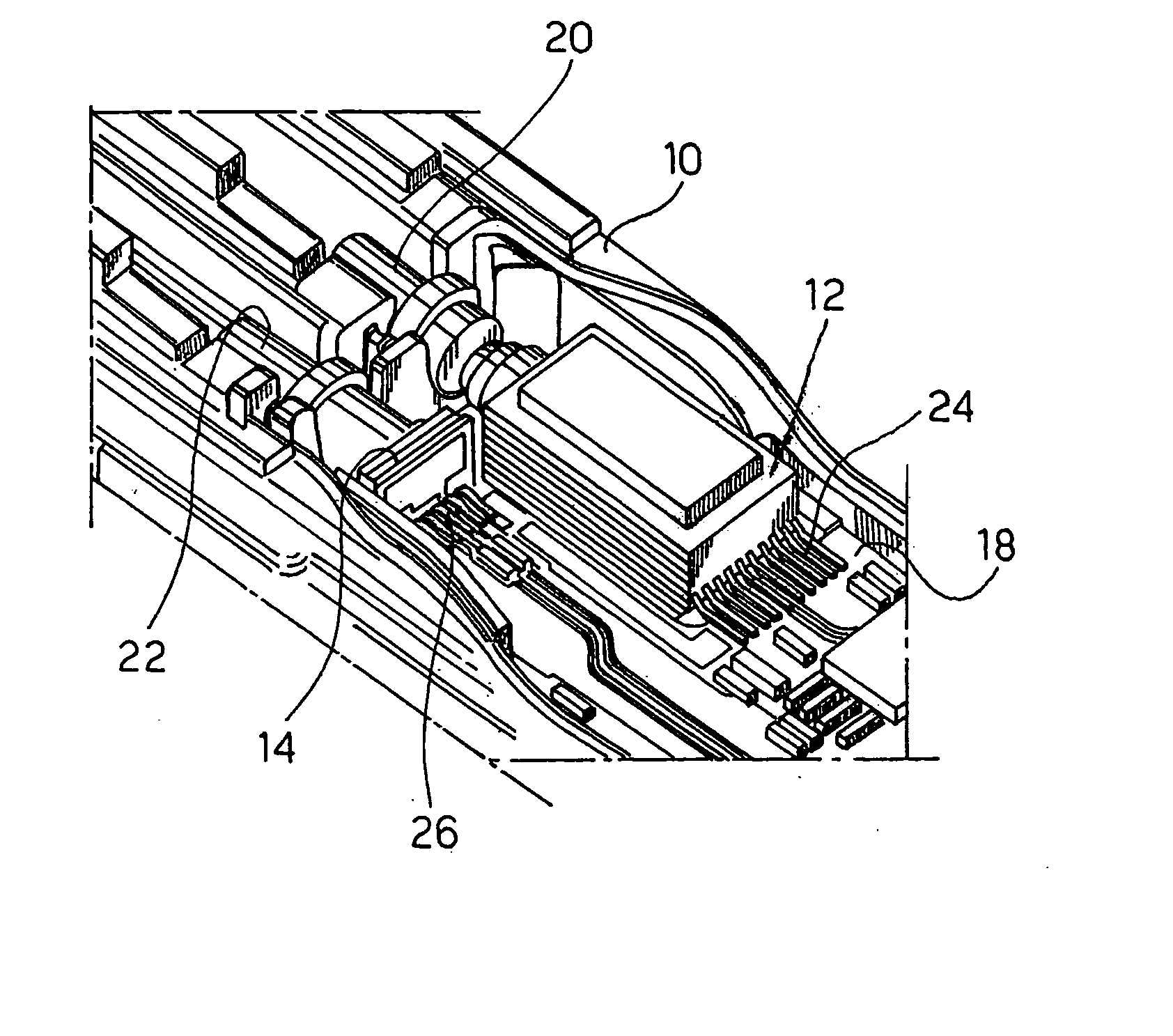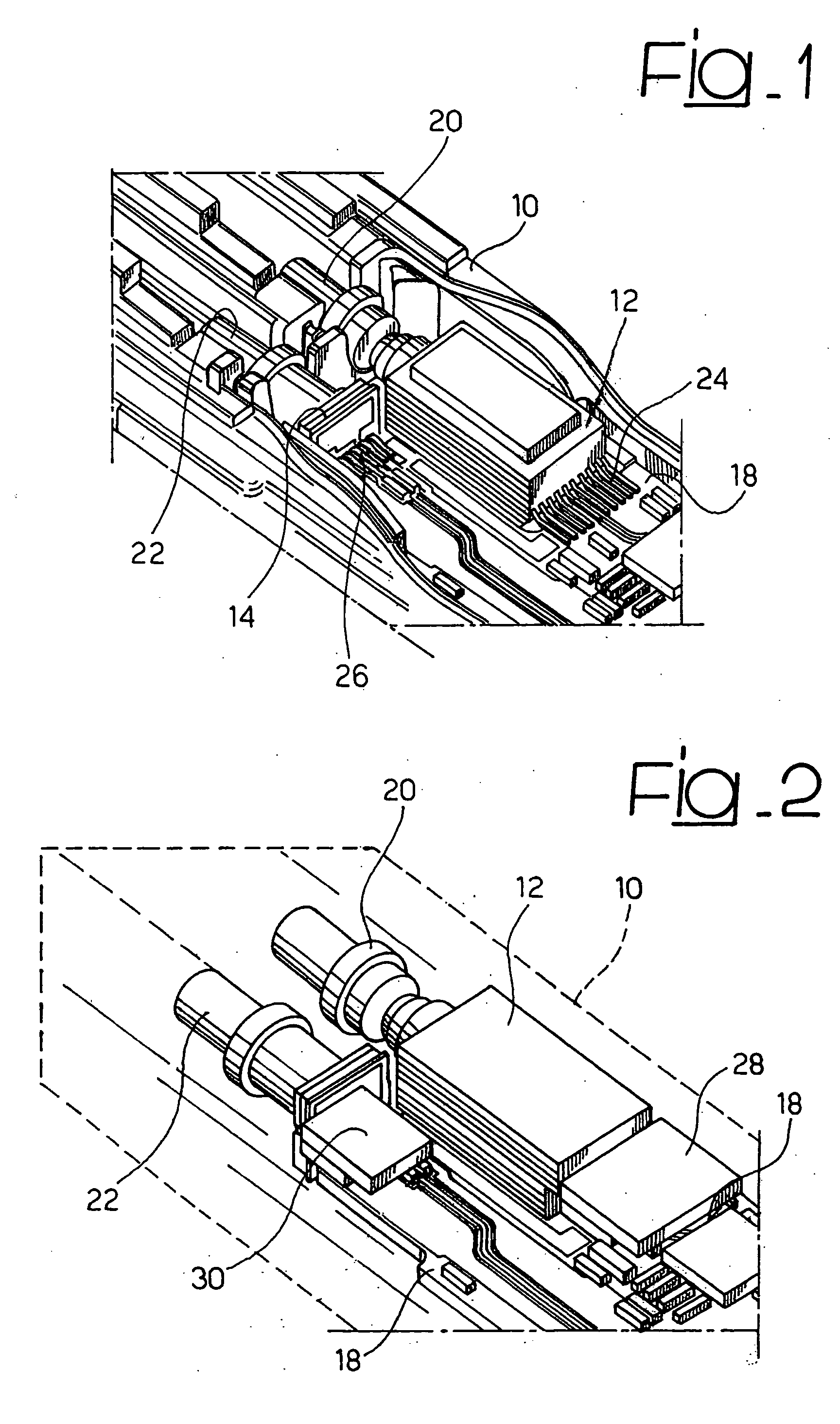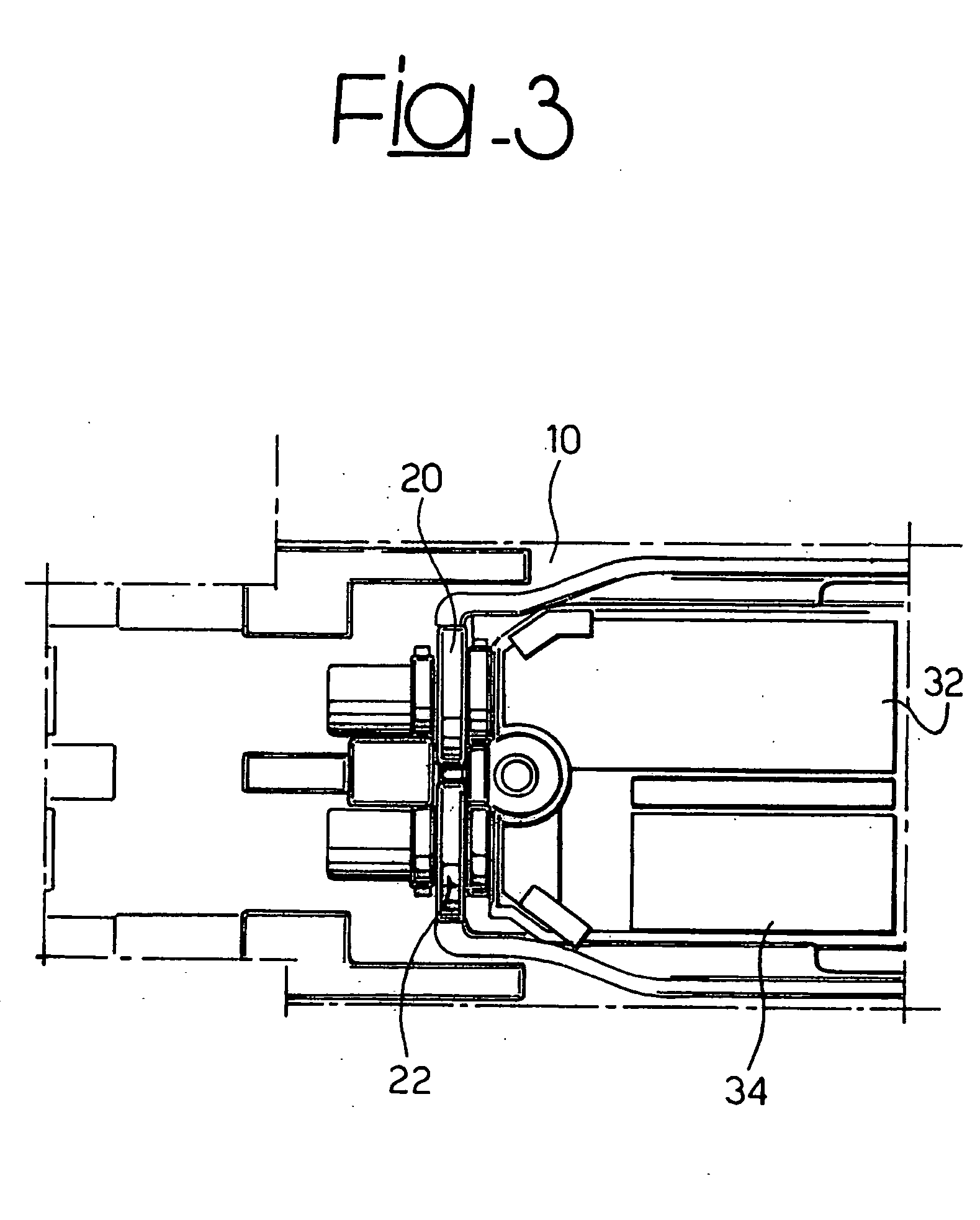Connection arrangement for optical communication systems
a technology of optical communication and connection arrangement, applied in the direction of coupling device connection, instruments, electrical apparatus, etc., can solve the problems of low cost and/or small dimension requirements imposed on the apparatus, significant problems, compatibility (emc), rf management and signal integrity, etc., to achieve easy production, reduce the influence of these fields, and facilitate the effect of production
- Summary
- Abstract
- Description
- Claims
- Application Information
AI Technical Summary
Benefits of technology
Problems solved by technology
Method used
Image
Examples
Embodiment Construction
[0022] As used herein “electromagnetic absorber material” will indicate any material exhibiting the capability of absorbing electromagnetic fields / waves. More specifically, electromagnetic fields / waves in the typical ranges of interest for fiber optic communications (i.e. 30 MHz to 20 GHz) will be primarily considered. More to the point, electrically non-conductive (i.e. insulating) absorber materials will be considered.
[0023] Such materials are currently available for use as free space absorbers, cavity resonance absorbers or load absorbers in microwave products. Typical formulations include magnetically loaded, flexible silicone or urethane sheets. Alternative arrangements include variations in the loading material, such as e.g. iron loaded, ferrite loaded or dielectrically loaded materials (which may exhibit resonant properties) and / or variations in the sheet structure, such as e.g. multilayered, carbon impregnated polyurethane foam sheets, open cell foam sheets with controlled ...
PUM
 Login to View More
Login to View More Abstract
Description
Claims
Application Information
 Login to View More
Login to View More - R&D
- Intellectual Property
- Life Sciences
- Materials
- Tech Scout
- Unparalleled Data Quality
- Higher Quality Content
- 60% Fewer Hallucinations
Browse by: Latest US Patents, China's latest patents, Technical Efficacy Thesaurus, Application Domain, Technology Topic, Popular Technical Reports.
© 2025 PatSnap. All rights reserved.Legal|Privacy policy|Modern Slavery Act Transparency Statement|Sitemap|About US| Contact US: help@patsnap.com



